Growing
WHAT DO CANNABIS PLANTS NEED
The Basics of growing cannabis plants
Like any other plant or organism on this planet, a cannabis plant has basic needs. These need must be fulfilled for the plant to become healthy and thriving. But knowing what a weed plant needs and how much and when, can be a confusing aspect of growing marijuana. This where most growers fail before they seem to be able to grow healthy plants. It takes time and effort to yield optimal results.
In general, cannabis plants grow pretty well on their own without much help. They’re called weed for a reason. However, if you give them the right nourishment, they will return your investment of time and care with a beautiful end-product.
The proper amount of nutrients can strengthen the plant, increases their resistance to diseases and accelerate their growth. It also helps weed plants produce high yields of those potent buds we love to enjoy.
In other words, a weed plant performs best when it has everything it needs to thrive. But what are all these “needs”?
If you are a first time or beginning/inexperienced grower, then it is important to know these needs. They are not only required for ever grow, but they also decide how successful your plants will be.
The 6 things a cannabis plant needs to be healthy
When you know what your plants need, you are in the right direction to grow healthy marijuana plants. Fortunately, these needs can be easily placed into six categories. Once you learn and understand these needs, you can provide your plants with the right amounts.
1. Adequate watering
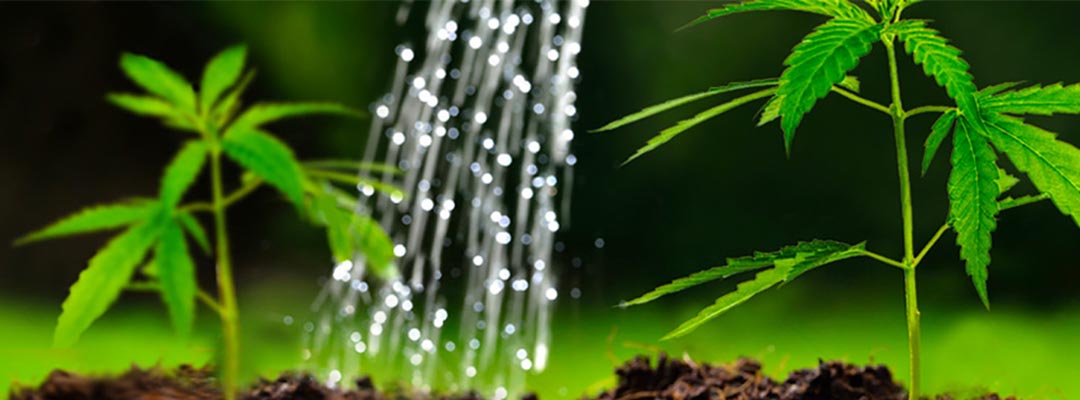
Water is the source of life. We all know that all living things depend on this element for survival. This is also true for cannabis plants, because water has a crucial role for the plant to stay healthy and alive. Water give a weed plant it’s flexibility and regulates the internal temperature.
Too much or too little water means that your weed plant will suffer! That’s why it is very important to provide your weed plants with proper watering.
- Overwatering will drown/choke the roots as they are not able to get oxygen.
Underwatering will make your plants dry, thirsty and unable to regulate their temperature.
Also be sure to check the pH level of your water, this must be between 5,8 and 6,2. The water temperature is evenly important; your plants do not like hot nor cold water. Make sure the water temperature is around 20C.
How much is enough?
You can check the amount of moisture in the soil by using a measuring device. You can also check with a thin stick; put it in the soil and if it comes out dry, that your soil is dry and needs more water. You can also feel the weight of the pots and how much water the soil is containing; if your pots feel heavy, your soil is still moist. If your pots feel light, your soil is probably dry and you will need to add water to keep your plants healthy.
The bigger your plants become, the more water they will consume. Especially during the last weeks of flowering. Keep in mind to check your plants water levels regularly during this phase!
2. Temperature and humidity
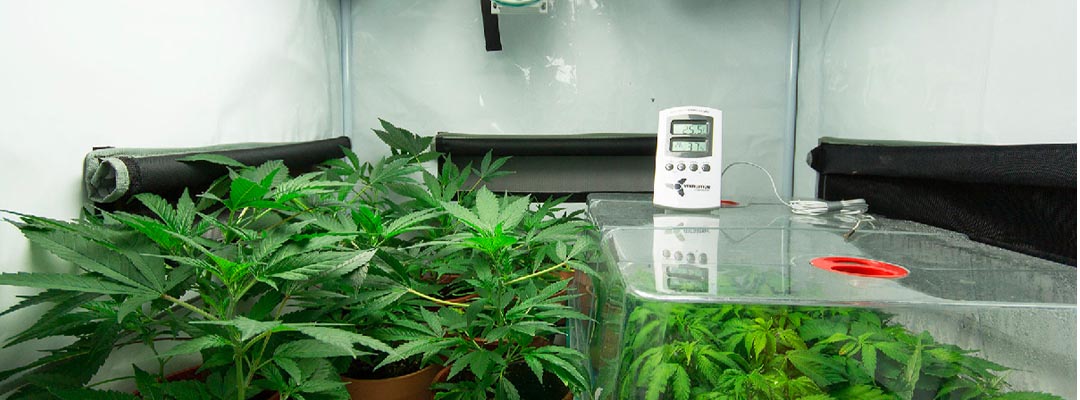
The correct temperature and humidity are very important for the growth of healthy cannabis plants. From germination to the mature plant, you will want to keep the temperatures stable. The ideal temperature is between 20C (68F) and 26C (80F). The ideal humidity varies depending on the phase the weed plant is in.
Temperature
- When marijuana plants get too hot, they will evaporate a lot of moisture. This will lead them to become dehydrated, which will cause stress to the plants.
- When marijuana plants get too cold, they will have a hard time absorbing moisture and thus also won’t receive any nutrients. Plants will stop growing and roots can get choked/drowned, which will lead to more problems along the way.
Humidity
- High humidity is important for young seedlings; they develop much better in moist, damp, warm conditions.
- Low humidity is the best condition for mature cannabis plants with buds; this will help ripen the trichomes and will decrease the chance of the buds rotting before you can harvest your plants.
The best way to grow healthy weed plants is to simply monitor the temperature and humidity levels. A weed plant can grow in any environment. But this guide is here to help you to grow a cannabis plant with the best possible results.
If you are concerned about providing the optimal temperature and humidity for your plants, you can start with strains that are most likely to survive less than optimal conditions. In the wild, weed plants naturally adapt to their environment. As a result, some strains can withstand ‘extreme’ temperatures better than others. In general Indica strains and Ruderalis strains are more suitable for extreme conditions.
3. Proper soil
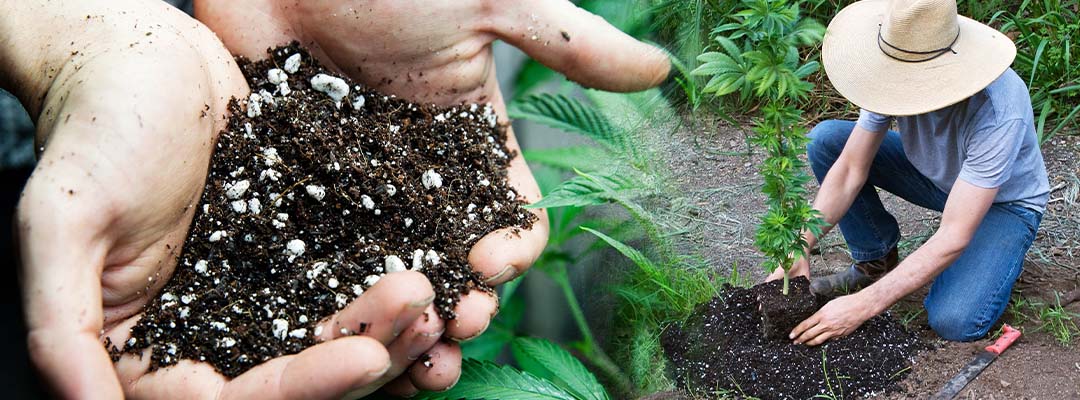
If you want to grow high quality cannabis, you will need to get your plants the best soil possible. If you use the wrong soil, you plants can end up weak and sick.
Balanced pH level
When the pH level of the soil has the right value, the roots of your marijuana plants will absorb more nutrients, which will help your plants grow better. The ideal value for the soil pH levels is around 7. Keep in mind that when you start adding nutrients, the pH level will change. Make sure that you regularly check the soils pH levels to ensure that it is in optimal condition for the plant roots.
Aeration and drainage
Keep in consideration that your soil has to hold water as well as air. If the soil holds too much water, air will not be able to reach your roots and your plants will suffocate (because the roots need air too). Stay away from clay and sand-based soils. A potting mix with perlite can help with drainage and aeration.
4. The right amount of Nutrients

Nutrients are essential for cannabis plants to produce of big, dense buds. A lack of the right nutrient will slow down growth and makes plants more susceptible to pests, molds, and other diseases. On the flipside, too much nutrients will change the pH level of the soil and causes nutrients to build-up; roots can no longer absorb the nutrients at this point.
In general there are two types of nutrients:
-
Macronutrients
- These nutrients provide your plants with their most basic needs. As a result, marijuana plants consume a lot of these to support their rapid growth. The macronutrients include nitrogen, phosphorus, and potassium.
Each mineral plays a significant role throughout the life cycle of the plants at different times. So, to get the best results, learn how to adjust and balance their amounts.
-
Micronutrients
- These are not consumed as heavily as the micronutrients, but these minerals are also crucial for a cannabis plant. Some examples of micronutrients are calcium, manganese, zinc, copper, and iron. The plants use these minerals in very small amounts; however, a deficiency or excess can cause serious problems.
Just like temperature and humidity, certain marijuana strains are better able to survive nutrient problems.
5. Light
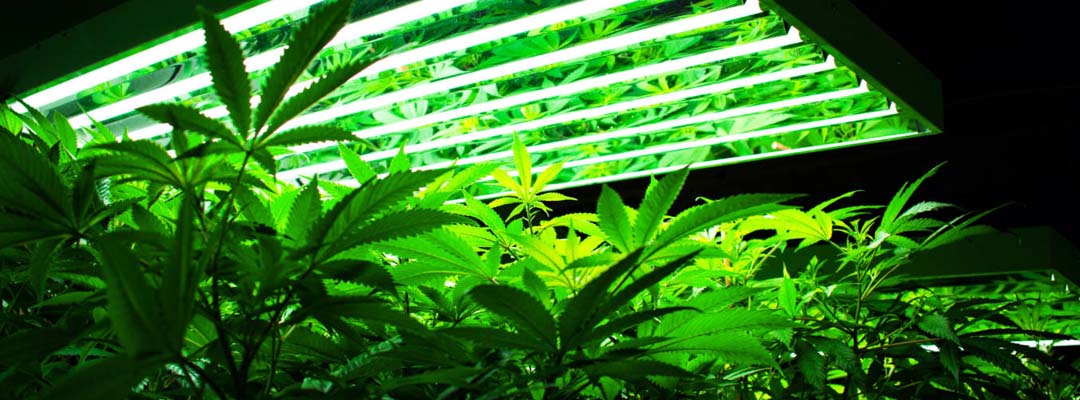
Due to the process of photosynthesis, a cannabis plant is relatively self-sufficient because this allows it to make its own food. However, for this photosynthesis to take place, cannabis plants require a good amount of light to convert carbon dioxide into sugars. Therefore, not enough light is really bad for plant growth.
A weed plant that does not receive enough light will stretch to get closer to its light source. When this happens, you’ll end up with thin plants that have very few leaves.
On the other hand, too much light can burn and weaken leaves.
Fortunately, it is pretty easy to control the amount of light that your weed plants receive.
If you grow your weed plants indoors, just adjust the distance of the light. If your plants grow outdoors, this can be a little difficult to control, but you can choose the optimal position for your plants so that they receive direct sun for best exposure.
Light is crucial for your plants to transition through various lifecycles. This matters because you need to know when it is time to harvest.
Also, for photoperiodic cannabis plants, the amount of light and darkness they receive during the day, will determine if the weed plants should start flowering or not. If the darkness is around 12 hours every 24 hours, your weed plants will think that autumn is starting and thus start flowering and creating buds, to ensure their reproduction is guaranteed.
6. Sufficient Fresh Air
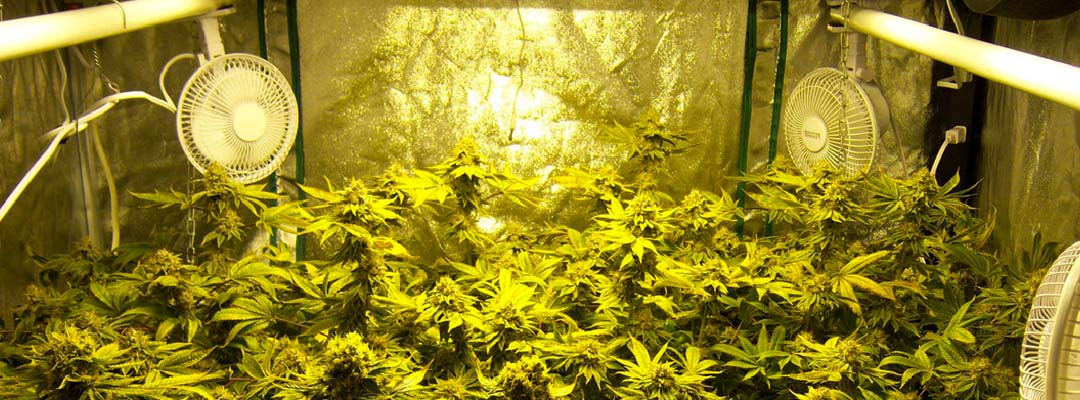
If your weed plants are growing outdoors, you probably aren’t worrying too much about airflow. However, if your weed plants grow indoors, a well-ventilated grow room is a crucial.
If you want to produce healthy plants with huge buds, then you must ensure there is plenty of fresh air.
Carbon Dioxide
Indoor growers can also monitor carbon dioxide levels. In contrast to humans and animals, weed plants require carbon dioxide to maintain their overall health. As mentioned in the light info, carbon dioxide is converted to a sugar, which the plants uses as energy source to grow and produce buds.
This means good amount of carbon dioxide is essential for them to thrive. Naturally the air holds about 400ppm of carbon dioxide. A plant can use up to 1200ppm when it is receiving enough light. To get sufficient amounts of this element, growers can install CO2 generators in their grow room. This usually results in larger, higher-yielding buds.
Growing indoors can be challenging for beginner growers, but it’s easier if you start out with the best strains.
These strains are great for beginners growing indoor.
Keeping your cannabis plants healthy is important
When growing any plant, you want it to be healthy. The main reason is that a healthy plant is easier to grow and more forgiving. When growing a weed plant, the need for a healthy environment is even more critical for it to have the best possible results. You will probably be consuming the buds produced by your weed plant, and of course you want those buds to be the absolute best.
Good news: Anyone can successfully grow a healthy marijuana plant with a good harvest. Everybody can become an expert grower, but is a combination of the right knowledge, practice and experience. Do your research and learn everything that you possibly can before you start growing. Then apply that knowledge to your weed plants.
With a lot of patience and practice, you will get more experience and your plants will get better with every harvest.
